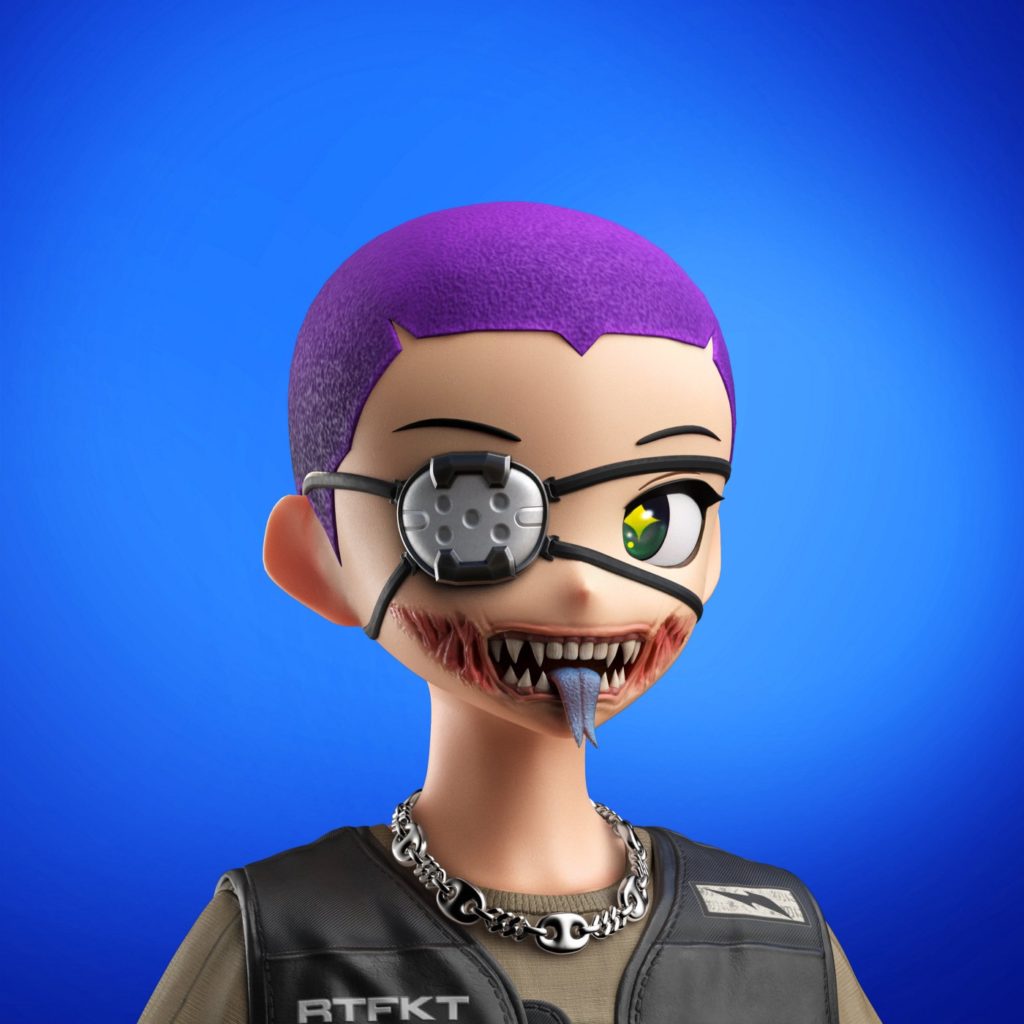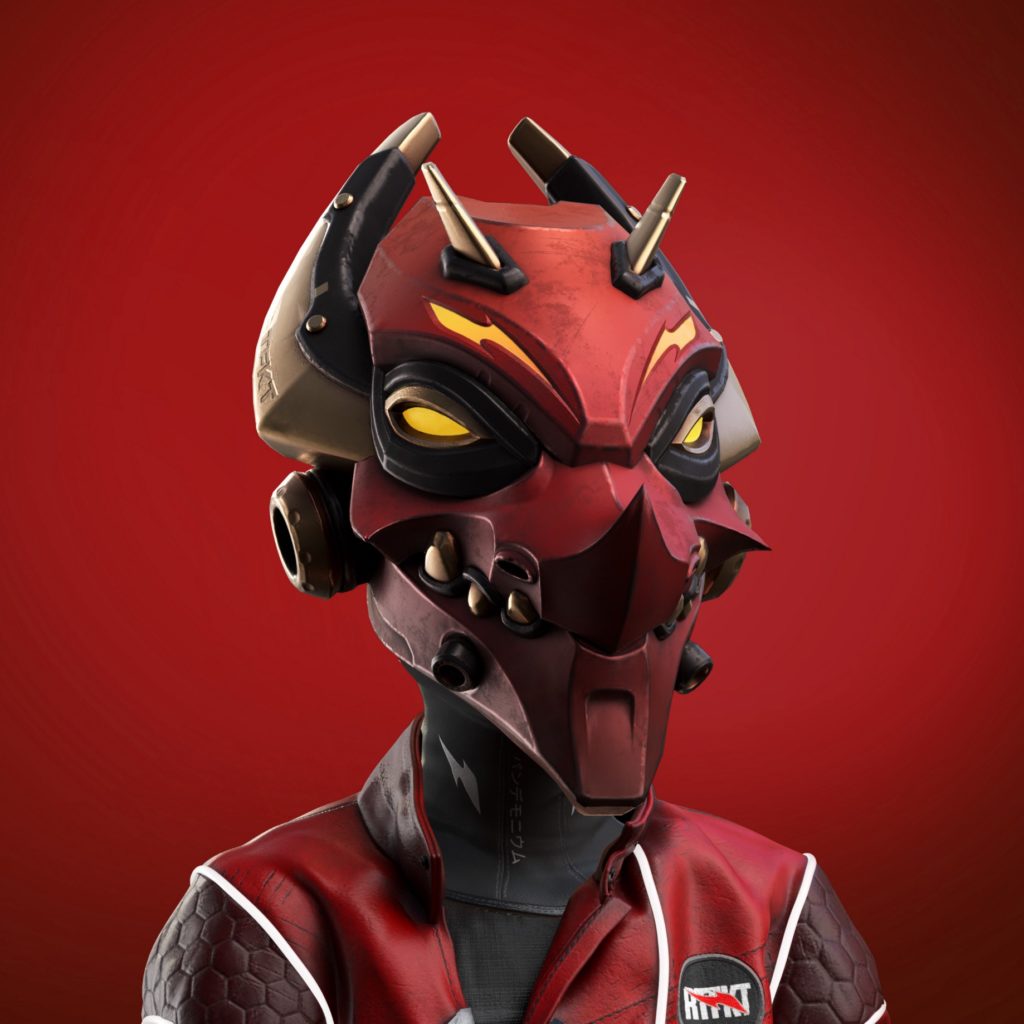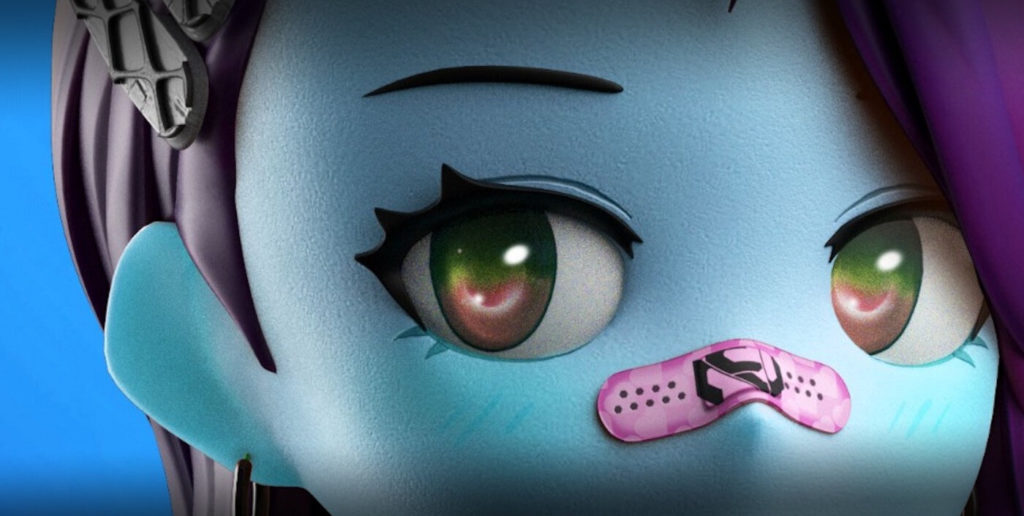David: For everybody reading right now, I’m here with Steven Vasilev of RTFKT, and we’re here today to talk about his upcoming avatar project, which I’m very excited to talk about. Steven, how are you doing today, and what should the people expect coming up soon?
Steven: I’m doing good! Well, it’s going to be the next evolution of avatar projects. We’re trying to do everything in our power to take the game into its next stage of evolution in terms of design, quality, and utility. So we’re super excited. We’ve been working very hard the last three or four months on this project. It’s super ambitious, which people will see when we release it, and I’m excited to tell you more of what we’ve been working on.
D: Awesome. So we’ve seen a lot of attempts at avatar projects over the past few months, but I know that you guys always do things differently. How do you feel about the concept of the open metaverse and using multiple solutions for virtual worlds? How are you guys taking advantage of the current platforms that exist in this upcoming activation?
S: So we see day by day, the metaverse is evolving. We’re taking the crypto native approach, so we’re working with platforms and games, such as Sandbox and Decentraland, to provide day one utility for the avatars and also other products that we release. We’re actually in talks with big triple-A game publishers to also begin the conversations of moving into this NFT ownership reality. So we’re right at the forefront of what’s possible, and we’re trying to push the limits to create what we envision where these assets become interoperable and can be used in different environments.
D: I love that. So I know you guys have been partners with a lot of these “metaverses,” especially the XR verses that currently exist like Decentraland and Sandbox, for quite some time. For people who are reading who might not be so familiar with the process, walk us through how you guys take advantage of wearables, especially through Decentraland. I’ve been a big fan of the way that you guys operate in the wearable space- but I would love to hear your intro to people who might not be so familiar with XR “verses” and how they can add value to an NFT purchase.
S: For sure. So with us, how we approach this is: we release and sell an NFT. We treat NFTs as passports into experiences. For example, with a cyber-sneaker NFT from RTFKT, we have different utilities that we add. So we’re most known for allowing physical redemption of the sneakers. In addition to that, we also airdrop- which is the process of dropping in a free NFT to someone’s wallet- Decentraland and/or Sandbox wearables. So they can express their identity and ownership of that NFT across different worlds. We’re openly and actively exploring as many different possibilities and ecosystems as possible. We did something recently with Avatsars, an avatar company where you can create your own avatar and export it into different games like VR chat. So as more and more publishers and ecosystems open up to the concept of NFTs and ownership, we want to be there to allow holders to showcase their identities or their products in as many different ways as they want.

D: Absolutely- with the metaverse, a lovely conversation that I get to have quite often is how we’re moving past base identity. We can now be whoever and look however we’d like, when we’re expressing our genuine selves. So with this project coming up, what are you excited about in terms of people being able to express themselves differently through these exciting characters?
S: Yeah. So we’re huge fans of anime, and we feel like anime spans this culture that we’re in very heavily. Before crypto punks or the current avatar projects, the founders and I, and loads of friends, always had profile pictures of our favourite anime characters. So that was the general gist of why we chose to do an anime project. The second thing we’ve done is that everything’s 3D modelled. So we’ve done over 200 traits, and we calculated that we can generate over a billion unique 3D assets. This is a big task, and if you look at all the leaks we’ve revealed so far, the quality is video game triple-A studio. Chris, our Creative Director, who comes from the video game and skin industry, assembled a team of veteran game designers, and we put a lot of work into polishing every single one of the 200 traits to look good. Another thing that people don’t realize while looking at the avatars is that doing 3D anime is very difficult. A lot of companies fail when making them because anime is known for its 2D style, and we managed to perfect the image where it still looks like a 2D anime character but fully 3D. Having the 3D models for all the traits allows us to plug into metaverses and have the 3D models ready for use. So that’s what we’re experimenting with, and the main goal was to make the best visual-looking avatar project that’s on the market. We all love how they look, and the community reception to the leaks has been insane- so we’re excited about it.
D: One of the most exciting things about your team as a company is the way that you guys advertise by integrating elements of the metaverse into the real world through the power of AR. So I did see your most recent Instagram posts and some of your recent teasers. Again, using the AR filters in real situations, I would love to hear from your perspective how that idea came about and how it’s been so effective for you as a brand for some people who might not be aware.
S: For sure. Benoit, the other co-founder of RTFKT, comes from gaming, and he’s been very deep in tech. So has Chris, in terms of AR and LIDAR and new technologies that are becoming sort of mainstream. And for us, since inception, we’ve always been big believers in AR as a technology, especially with the Snapchat lenses that are coming out, Apple’s glasses, etc. And we believe that it will take one big giant like Apple to mainstream either technology. So right now, how we see it is coming from the sneaker industry itself. Sneakers have become tradable assets, similar to why we do NFT sneakers, because the whole process can be simplified. If people buy sneakers, take a picture to post on their Instagram or social media to show that they have that item, they can then flip it and sell it. So we allow that same function. So if you buy one of our NFTs, and you don’t want the physical item for some reason, you can still create content using AR. We’ve partnered with Snapchat to allow people to have these experiences. So when our new website comes out, it will be clear that owners of the NFTs can access exclusive AR filters to showcase and create content, which is another form of self-expression. We’re big believers in AR, and right now, we’re filming our vision project, which should be coming out by the end of the year, which is our vision of what the future of NFTs and AR is going to look like. So that’s a really big project to keep an eye out for.
D: Before we get deeper into the future of AR and the future of the metaverse, I would love to talk again about this project and how you guys are playing with identity, because you were mentioning the power of these AR filters and how we can use them in the real world. But I also do think that as we create the metaverse through AR, virtually people will really start using wearables, and especially avatar projects, as their identities. So with this upcoming project- do you see people buying these as not just their PFPs, but also as their new identities?
S: That’s why we went for the avatar project- because we have seen people, how they create communities, and we experienced it ourselves. When we started the company, we bought punks, and we were welcomed into the punk community- which is an amazing community. And we really liked the concept of people using our punks as identifiers, right? So that was the way we went for our avatars. Our goal is for people to use these avatars as their identities. The brand we’ve created that’s releasing this project has a storyline that’s set in this whole concept of identity and what the future of identity could look like. And we expect, with the utility that we’re planning to integrate into multiple virtual worlds, to also provide the 3D models for our users to download, rig into games, or mod into games- also Vtubing! The models eventually will be rigged so people can use these avatars to Vtube and create their own content or Twitch streams using their virtual identity. So we think that’s a big part. We’re also trying a lot of innovative mechanics in terms of the smart contract and functionalities.
D: I recently had a call with Whale Shark, and he definitely does the Vtubing thing- he has this whole custom avatar, and it’s amazing to see what that stage of the future is going to look like. So I’m really excited to see that and what the newest level of unlockable content will look like from RTFKT. You guys have done an amazing job of creating community around successful projects. Like your partnership with the punks, your partnership with apes, etc. So I would love to hear, from your perspective, how those kinds of conversations came about, and how that helped dictate this very identity-driven avatar project.
S: Yeah, so it comes down to the nature of our brand. We’re a creative-led brand, a community-led brand, and an open-source brand. So the way we approach things is for and by the community. An example of this is for the avatar presale; we’re dropping 20,000- so we made 10,000 exclusively available to our NFT holders. So if you own an RTFKT NFT, you can mint up to three for 0.05 ETH, which is about $150 USD; and what that caused was over 14 million in secondary sales, and our floor price went from, I think, 1 ETH to 7 or 8 ETH now. So we’re generating a lot of wealth for our community- we always put them first. And in regards to partnerships, we’ve been contacted by literally every brand, including many that we aspired to work with. And we have a very strict approach. We, 1. Check if they’re native to our community or represent who we are as creators, 2. Make sure that we will have the creative freedom and control and that we don’t have to go through marketing departments, and 3. We can put our brains together; can we do something that we couldn’t do individually? So why we focus on the crypto community is we believe it’s a very powerful community. It’s a small group of people that together can achieve big things, and they all exist under the same mentality of building this open metaverse and the only way we can achieve such a concept like this is together. So we find it better to collaborate internally within the community and pick exclusive brands or brands that we admire and we think that we can do something big for the community to collaborate with, so that’s sort of our analogy and how we approach the market.
D: I love the way that you guys go about it. One other thought- I know you have a deep rooting in anime but I would love to hear if there’s any specific reference point there that you guys come back to in terms of the future? I know you mentioned Ready Player One, but is there any personal reference point for your team of the future that you would like to see?
S: It comes down to the three founders, we all have different films and animes that inspire us and that we bring together like Matrix and Galleon, we sort of combine everything and just create who we believe will fit into what we want the future to be. And why I think it’s really amazing in the NFT spaces, avatar projects have become people’s identities, and a lot of people have gained confidence in not being their real selves. So someone could say I’m the “Wizard of NFTs” and put their picture as a punk, create their own storyline. So we’ve seen, like you said, adults, showing off their childish side, creating these storylines and expressing themselves in new ways. And that’s really deep-rooted in our avatar project. We’ve created a bunch of traits that allow people to showcase different identities. We’ve also made it non-gendered in the sense that you can choose to have a male or female body. We don’t define the sex of the face; they all use the same base head but have features that can differentiate them. So we’re really trying to build something that’s already set in the future and create the norms that we want to see. And I feel like that’s our role in this place, to innovate and test things out and help guide our community and what we’re building into the future we want to create.

D: That is so excellent. I think it’s the idea of identity and being more transparent about who you really are. It’s interesting because, through an avatar project, it seems like you’d be concealing your identity but often, when we have an avatar on- we’re more authentically ourselves because we’re not worried about being judged by others because we have this intermediary, like a wall being the avatar between your physical self, and your identity online, which I think is really exciting.
I would love to get a message from you, just for the other people who are operating the space, about how important it is to facilitate and even delay projects or work a little bit harder to make sure that they are on-chain and to make sure they are open source.
S: Yeah, I feel like as awareness increases in the space, the importance of on-chain data will be crucial because there are some projects, for example, where they’re not fully on-chain. So that means you could spend $100,000 on an NFT, and then they go one day and change the image to a meme frog, right? So there are these sorts of scenarios. I think a good example of this is from Chris; he comes from the steam industry of game skins, and there was a scenario where someone’s account got locked by steam, and he had millions of dollars of skins in there, and he committed suicide, and that was a horrible thing. And that shows how important it is for you to actually have true ownership where the item can’t be changed if the company goes bust, for example. The servers go offline, and you lose everything. We also saw it with Nifty Gateway. All the NFTs that are held on the platform are in Nifty’s wallet, right? So if something bad happened to the company, if they lost the wallet, your NFTs are gone.
So, ownership is super key, and that’s why we’re seeing such a boom. Decentralization as well is key to the whole industry, and that’s what we keep super native to our brand. All of our advertisers are on-chain, and it’s kind of annoying because we had ideas of interoperability and evolutive items (where the images change), but we chose not to do that just to stay fully decentralized. So I think as time progresses, there will be advancements in terms of how much can be on-chain and how much can be off-chain, because there are some limitations to having everything on-chain.
D: It’s always easier via metadata, and it always has been.
S: Exactly, I think it depends really on the company as well, that’s interacting with the space and what their goals are because for some artists, maybe having their data on-chain isn’t the most crucial part of the ecosystem or what they’re building. But I do agree that the future is definitely on-chain. People need to own what they pay for, and I feel like that’s what’s so revolutionary about the space, especially the royalties. Having lifetime royalties is a concept familiar to many game-skin designers, but to the majority of the world, they haven’t experienced that. And especially for artists, it’s groundbreaking to be able to profit off the work you’ve created after an event has happened that has caused your work to appreciate in value or your talent is recognized. So I think that’s very crucial.
We’d like to thank Steven for taking the time to do this interview. For more information on RTFKT, Steven, and Project Akira, feel free to look through the links below:
Steven’s Twitter: https://twitter.com/zaptio?lang=en
RTFKT’s Twitter: https://twitter.com/RTFKTstudios
RTFKT’s Discord: https://discord.com/invite/rtfkt
Project Akira Teaser: https://twitter.com/RTFKTstudios/status/1442188635101663233




